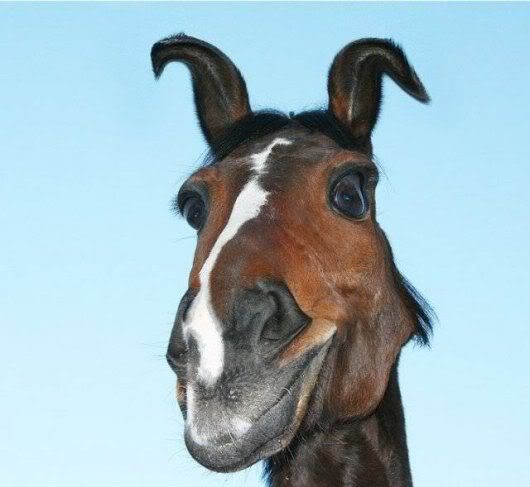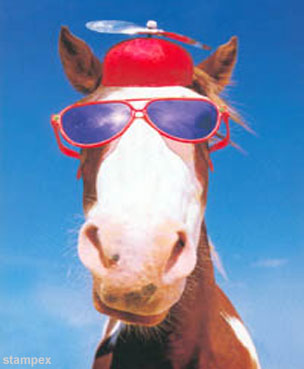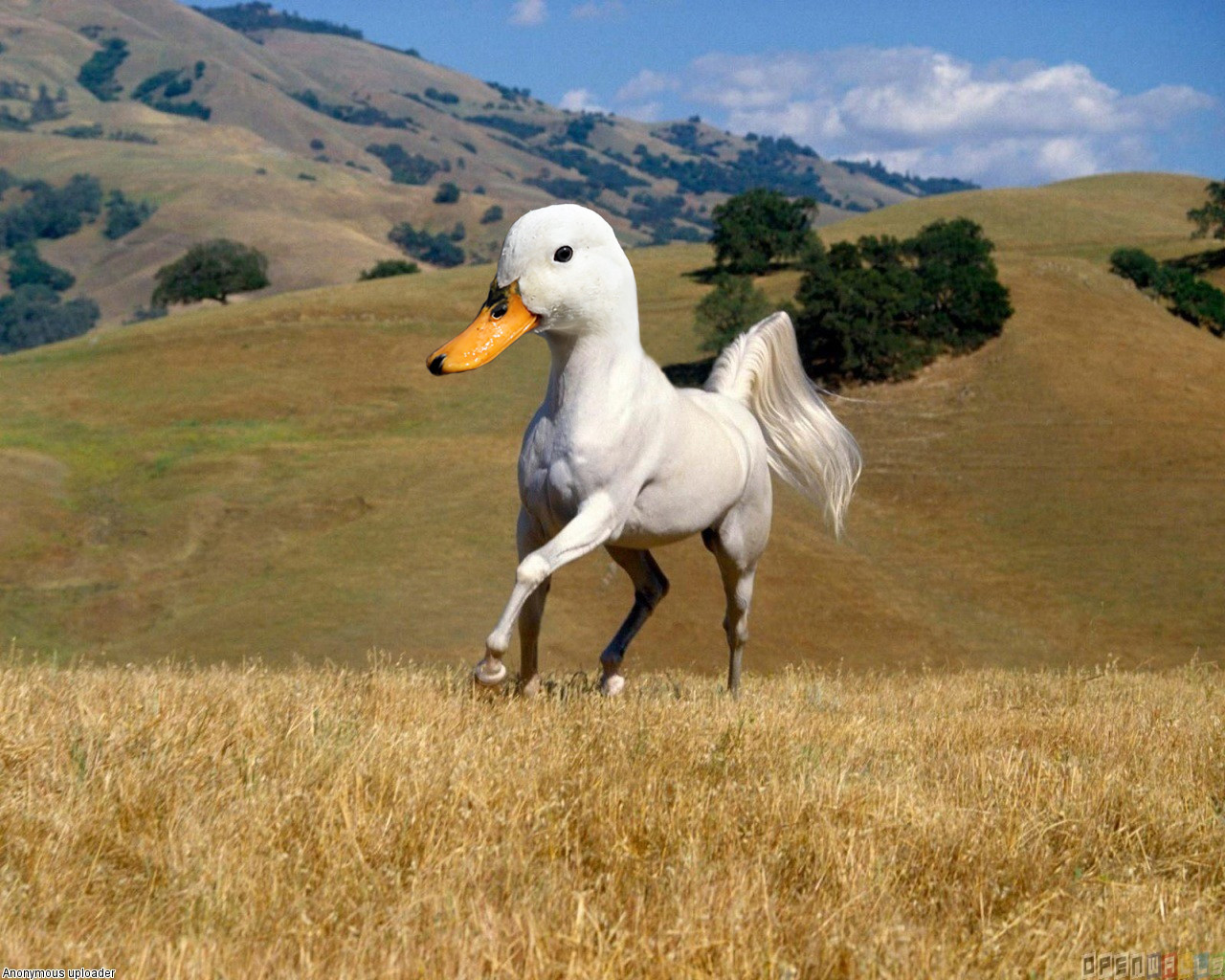Funny Horse Picture Biography
Horse Vision
The horse has the largest eye of any land mammal.
A horse can see better at night than a human. However, it takes a horse's eyes longer to adjust from light to dark and from dark to light than a human's.
Horses are not color blind. They have what researchers call "dichromatic" vision, or "two-color" vision. Research indicates horses can perceive blue and green tones, and color variations based on them. However, they have difficulty with other colors, including reds.
Most of the time, a horse has "monocular" vision. This means a different image is seen by each eye so that a horse is seeing two different pictures at the same time. A horse can also have "binocular" vision. Binocular vision is when both eyes work together to see one picture (humans have binocular vision). A horse only has binocular vision when it is looking down its nose.
A horse has a wide range of vision. A horse can see completely around its entire body except for small blind spots directly in front of its face, underneath its head, and directly behind itself. This is why it's very important not to walk up right behind a horse - you are in its blind spot and if you startle it you may get kicked.
At right: The areas with a #1 shows where a horse has monocular vision. The area with a #2 shows where a horse has binocular vision.
Horse facts: Vision
Most of the time, wherever a horse's ear is pointing is where the horse is looking with the eye on the same side. If the ears are pointing in different directions, the horse is looking at two different things at the same time. There are exceptions to this. For example, if a horse has its ears pinned back against its neck in anger, this does not mean it is looking backwards with both eyes.
A Horse Is A Horse When...
A horse is usually not considered to be a "horse" until it is 5 years old. Before that, males are known as colts and females are known as fillies. However, it is still acceptable to call a colt or filly a horse.
A foal is a very young horse and can be either male or female.
A Horse Has A Frog......Four, Actually
On the underside of a horse's hoof is a triangular shaped area called the "frog." When pushed on the frog has a firm, rubbery feel that yields to pressure. Each time the frog comes into contact with the ground it acts as a shock absorber for a horse's leg, and also helps to pump blood back up the leg.
A healthy, functioning frog that makes good contact with the ground is vital to the hoof and leg health of a horse.
Horses Are Ungulates
A horse is an ungulate, which means it is a mammal with hooves. Horses have one hoof at the end of each leg, which makes them odd-toed ungulates. Cattle have two hooves at the end of each leg, which makes them even-toed ungulates.
The horse has the largest eye of any land mammal.
A horse can see better at night than a human. However, it takes a horse's eyes longer to adjust from light to dark and from dark to light than a human's.
Horses are not color blind. They have what researchers call "dichromatic" vision, or "two-color" vision. Research indicates horses can perceive blue and green tones, and color variations based on them. However, they have difficulty with other colors, including reds.
Most of the time, a horse has "monocular" vision. This means a different image is seen by each eye so that a horse is seeing two different pictures at the same time. A horse can also have "binocular" vision. Binocular vision is when both eyes work together to see one picture (humans have binocular vision). A horse only has binocular vision when it is looking down its nose.
A horse has a wide range of vision. A horse can see completely around its entire body except for small blind spots directly in front of its face, underneath its head, and directly behind itself. This is why it's very important not to walk up right behind a horse - you are in its blind spot and if you startle it you may get kicked.
At right: The areas with a #1 shows where a horse has monocular vision. The area with a #2 shows where a horse has binocular vision.
Horse facts: Vision
Most of the time, wherever a horse's ear is pointing is where the horse is looking with the eye on the same side. If the ears are pointing in different directions, the horse is looking at two different things at the same time. There are exceptions to this. For example, if a horse has its ears pinned back against its neck in anger, this does not mean it is looking backwards with both eyes.
A Horse Is A Horse When...
A horse is usually not considered to be a "horse" until it is 5 years old. Before that, males are known as colts and females are known as fillies. However, it is still acceptable to call a colt or filly a horse.
A foal is a very young horse and can be either male or female.
A Horse Has A Frog......Four, Actually
On the underside of a horse's hoof is a triangular shaped area called the "frog." When pushed on the frog has a firm, rubbery feel that yields to pressure. Each time the frog comes into contact with the ground it acts as a shock absorber for a horse's leg, and also helps to pump blood back up the leg.
A healthy, functioning frog that makes good contact with the ground is vital to the hoof and leg health of a horse.
Horses Are Ungulates
A horse is an ungulate, which means it is a mammal with hooves. Horses have one hoof at the end of each leg, which makes them odd-toed ungulates. Cattle have two hooves at the end of each leg, which makes them even-toed ungulates.
Funny Horse Picture Images Wallpapers Photos 2013

Funny Horse Picture Images Wallpapers Photos 2013

Funny Horse Picture Images Wallpapers Photos 2013

Funny Horse Picture Images Wallpapers Photos 2013

Funny Horse Picture Images Wallpapers Photos 2013

Funny Horse Picture Images Wallpapers Photos 2013

Funny Horse Picture Images Wallpapers Photos 2013

Funny Horse Picture Images Wallpapers Photos 2013

Funny Horse Picture Images Wallpapers Photos 2013

Funny Horse Picture Images Wallpapers Photos 2013

Funny Horse Picture Images Wallpapers Photos 2013
No comments:
Post a Comment